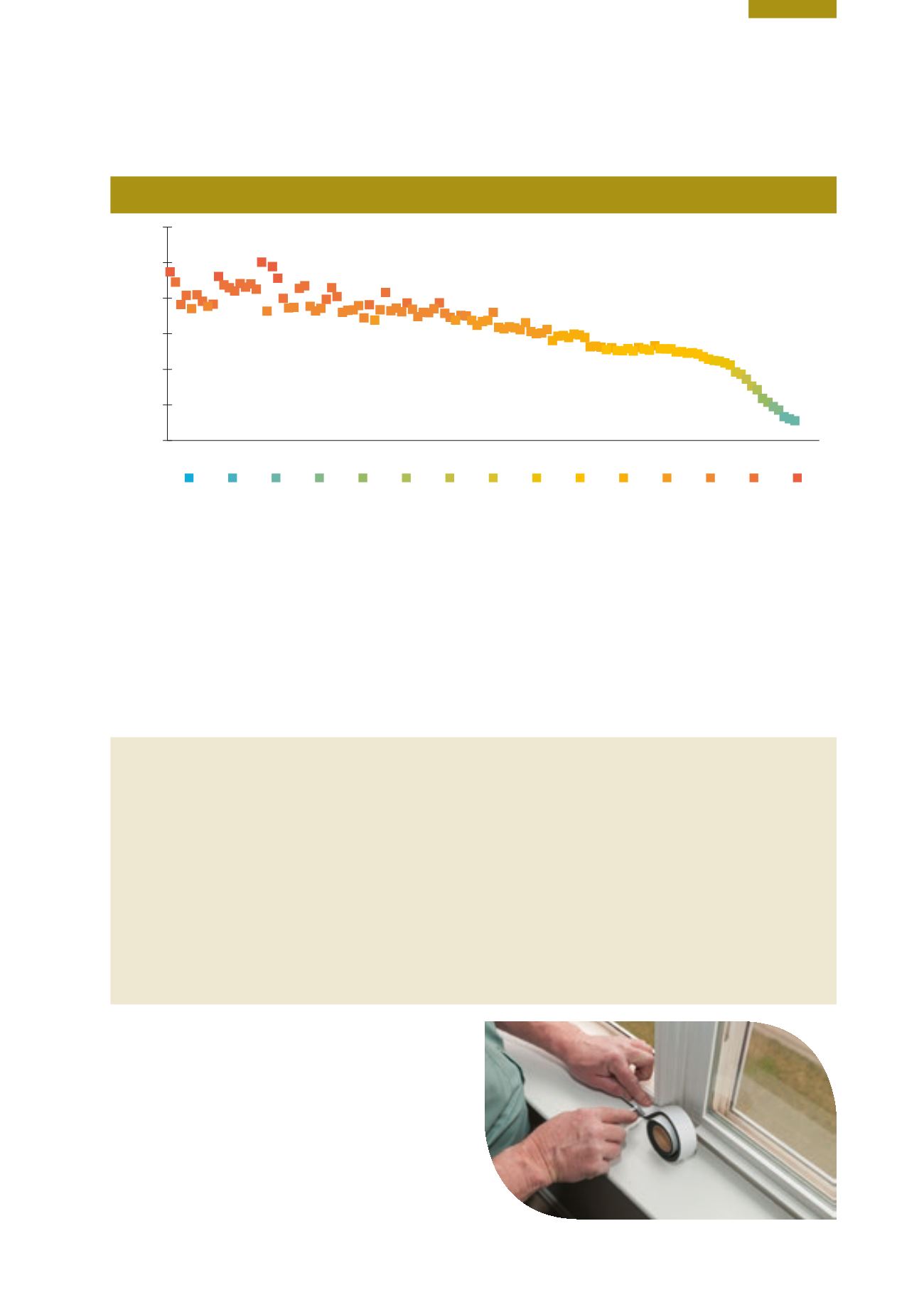

179
Chapter 11: Environment and Energy
A Significant Increase in Retrofitting of
Homes and Businesses is Essential
Approximately 75,000 homes and businesses will need
to be upgraded for improved energy efficiency every
year between now and 2020 if Ireland is to achieve
the EU’s 2020 energy efficiency target.
Retrofitting of the housing stock to reach BER grade A is an
essential action to reduce GHG emissions. Upgrading a C-rated
house to an A rating can reduce energy use from an average
of 220 kWh/m
2
to 67 kWh/m
2
(TEP, 2015). This represents a
major increase in comfort and long-term savings in energy
costs. The “nearly zero-energy building” is a building standard
that has a very high energy performance with the energy
requirement being met to a significant extent by renewable
sources. Recent (SEAI, 2016) data show that approximately
75,000 homes and businesses will need to be upgraded for
improved energy efficiency every year between now and 2020
if Ireland is to achieve the EU’s 2020 energy efficiency target.
This is a very significant and immediate challenge.
The Tipperary Energy Agency example shows how both
learning and the effective use of incentives and innovative
financing schemes can rapidly advance this retrofit process.
Deep retrofits involving very extensive insulation and major
energy efficiency measures, coupled with greater use of
renewables on the electricity grid and the phasing-out of
peat and coal over the next decade, can significantly lower
CO
2
emissions from the domestic sector. Such approaches
need to become central to the national discourse on
actions to improve the quality of the national housing
stock and the quality of life and health of communities.
Tipperary Energy Agency Warmer Homes Insulation Scheme
Since 2004, the Tipperary Energy Agency (TEA) has worked on a series of projects to support the retrofit of
thousands of houses to bring these houses to grade D1 (from grades E-G) and to grade B3 standards, (from grades
C1-C3) respectively. However, TEA determined that existing housing could be retrofitted to a better standard that
virtually eliminates fossil fuel use.
In 2015, the TEA, under the SEAI Better Energy Finance Pilot programme, completed renovations of 10 private
houses and achieved an average reduction of 153kWh/m
2
/yr, reducing energy consumption from 220 kWh/m
2
/yr on
average (C3 standard) to 67 kWh/m
2
/yr on average (A standard). This near zero-energy building standard of retrofit
(SuperHome Retrofit) included the provision of designed ventilation, air-tightness and an air source heat pump heating
system. Retrofitting of a further 25–30 homes is due to be completed in 2016, leading to an estimated 60–70%
reduction in household carbon dioxide (CO
2
) emissions from these homes. This retrofit also resulted in a significant
decrease in particulate emissions from open fires or stoves. See
www.superhomes.iefor more information.
Figure 11.5
Average Building Energy Rating of Dwellings Constructed Since 1900 (Source: SEAI)
0
100
200
300
400
500
600
2020
2010
2000
1990
1980
1970
1960
1950
1940
1930
1920
1910
1900
G F
E2
E1
D2
D1
C3
C2
C1
B3
B2
B1
A3
A2
A1
kWh/m
2
/yr
BER Rating


















